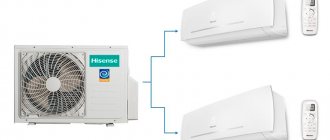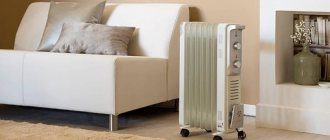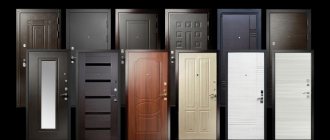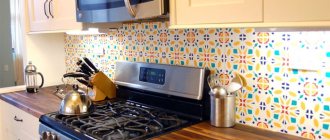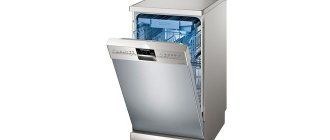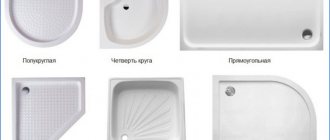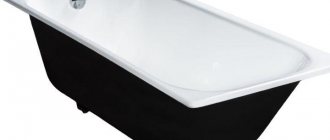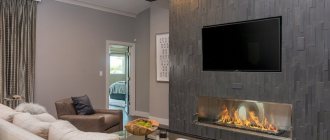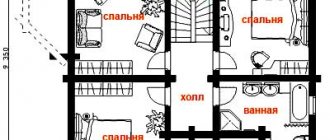The rating of soundproofing materials for an apartment presented in this article will help you choose the best option for soundproofing walls specifically for your specific case. But if you think that I will tell you one of the best or most popular soundproofing materials, then I will have to disappoint you a little. The fact is that there is no material that is ideal for different situations. Much depends on the type of penetrating noise, its intensity, the design of the walls, and the permissible thickness of the soundproofing material. Based on this, one or another material is selected.
Features of sound insulation under plaster
Modern apartments in multi-apartment buildings have a variety of layouts, but they all have one common problem - insufficient sound insulation. This threatens that sounds, sometimes quite loud, coming from neighbors will interfere with proper rest and a quiet life. The issue is resolved by installing sound insulation. The main thing for this is to choose high-quality, modern and safe materials that will not only eliminate unnecessary noise, but also will not harm the residents.
Soundproofing options
Most often, gypsum plaster is used during repair and construction work. It has many positive properties, but sound insulation is not one of them. To get rid of annoying noise, you can use various methods and use a wide variety of sound-absorbing materials. The main thing is to decide on the one that is suitable in each specific case. Let's look at the most popular of them.
Styrofoam
Very often, consumers use ordinary foam plastic for sound insulation. It has a low price and does not cause problems during the work. You can buy this material in almost all specialized stores. In addition, it is very light, so transportation and installation will not be difficult.
Of course, foam has sound-canceling properties, but other materials do a much better job.
Drywall
A very popular option is to use drywall to suppress noise. In addition, with its help you can implement non-standard and unusual design solutions. When using drywall, you must remember to always use insulation, which has excellent acoustic properties. Information about these properties must be indicated on the product label.
The insulation is sold in rolls; before use, it must be cut and secured inside the structure. It is necessary to leave air between the wall and the materials; with its help, excess moisture will be removed, and noise absorption will be more effective. This method does not require large financial costs and is quite effective.
Fiberglass and mineral wool boards
Plates made of fiberglass and mineral wool perfectly absorb sound, but have their own characteristics when used. First of all, they must be installed in frames, which are subsequently covered with plasterboard, which inevitably leads to a reduction in the size of the room. However, this method is very effective.
The material is environmentally friendly, so it will not harm the health of residents and visitors of the premises. But the plates themselves have a fairly high price, which is why the method has not found wide application.
Polyurethane panels
The basis of the material is acoustic foam. The panels are up to 10 centimeters thick and are attached to the walls using glue.
You can do the installation work yourself, as it does not require any special skills.
Liquid sound insulation
It is a special mixture that is laid in a thick layer on top of the plaster. The method is quite effective, but it must be taken into account that the composition will need to be covered with plasterboard or decorative boards.
Roll and sheet cork
It has a mostly decorative function. However, the coating is quite thick and also has a peculiar structure, which gives it noise-absorbing properties.
It should be borne in mind that the method is not very effective.
High density membranes
The use of this material helps to cope well with the problem of extraneous noise in the room. The membranes are very thin, but this does not negate their excellent sound-absorbing properties. In addition, they are easily attached to the surface and are securely held on it for a long time.
Soundproofing plasters
This option is very popular and is often used for finishing. The price of such plaster is low, and you can carry out the work of applying it yourself. In this case, no additional finishing is needed.
The mixture can be used in any room, as it is environmentally friendly and completely safe.
The gluing process - step-by-step instructions
Soundproofing wallpaper is sometimes glued after the membrane, but if the room is close to the exit from the apartment, then it is better to use cork elements, then the sound from the entrance will not disturb the peace of the residents. Algorithm of actions:
- The previous layer of facing elements is removed, but careful leveling of the surface is not required. Plaster, old finishing, everything that can be easily removed is removed.
- After this, the wall should dry well. Craftsmen sometimes use construction heaters to speed up this process.
- If you have chosen wallpaper that already has a backing, the gluing procedure will take place in one stage. There is no need to first cover the surface with soundproofing building materials.
- The wall is treated with an adhesive composition. If non-woven wallpaper is selected, then the appropriate glue is purchased.
- The roll is rolled out on the floor, sheets of the required length are cut. The gluing is carried out joint to joint.
We recommend: From A to Z: all about Penoplex sound insulation
If you purchased ordinary wallpaper, then the first step is to lay soundproofing material. It should dry for about a day. Only after this can the facing elements be glued.
What to consider when choosing
There are many soundproofing options, so the consumer needs to choose the method that is most suitable in a particular case. First of all, you need to consider the size of the room. It is not advisable to cover a small room with thick blocks and panels, which will take up extra space.
It is better to combine ceilings and walls covered with plaster with materials that can reflect sound. Typically, fibrous, porous and granular panels are used in this case.
If it is possible to contact specialists to install sound insulation, and also if there is sufficient room area, it makes sense to install a more complex structure, which includes a sound absorber laid in several layers.
When choosing a soundproofing material for plaster, you must carefully study all the information about it, and then the result of the work will fully meet the consumer’s expectations.
You can learn how to do budget soundproofing of walls with your own hands in the following video.
Source
Brick walls
Brick walls have good soundproofing properties.
To improve sound insulation, a plasterboard frame filled with sound-insulating material is used.
The process of forming noise protection consists of several stages:
- first the frame is marked;
- For better sound insulation, it is recommended to attach the guides to the ceiling and floor, placing special insulating pads under them. If the guides are attached to the wall, they are covered with a soundproof seal;
- the gaps between the profiles are tightly filled with soundproofing boards;
- seams between slabs and gaps near the floor, ceiling and walls are sealed with sealant;
- Sheets of plasterboard are attached to the profiles and puttied. It is better to do the covering in two layers with overlapping seams. Gaps around the perimeter of the casing are sealed with sealant.
Noise suppression methods
One of the most popular materials for creating sound insulation in an apartment is polystyrene foam. It is lightweight, inexpensive, and easy to use. Foam panels can be mounted on the surface of walls without the help of a professional. However, unlike its competitors, the material has a low level of noise absorption. Polystyrene foam itself does not look aesthetically pleasing, so decorative finishing is applied on top of it.
An equally common option for sound insulation is the use of acoustic slabs. They are strong, durable, environmentally friendly, do not require complicated installation, but are expensive, which is why they are not very popular. Acoustic structures are installed in studios; specialists are hired for this.
Acoustic insulation or mat is affordable and used in conjunction with drywall. Such sound insulation can be built inside the frame. Before purchasing a material, you need to determine its acoustic capabilities.
Soundproofing plaster for walls is in wide demand, despite the fact that it also has negative reviews. Many doubt the effectiveness of this remedy. But soundproofing plaster must be chosen correctly! It is worth highlighting the advantages of this tool:
Soundproofing plaster prevents the penetration of noise vibrations. However, in order for it to exhibit its properties, it is necessary to follow the application technology. Soundproofing plaster allows you to suppress unwanted sound waves as much as possible. You can apply it to the surface of the wall with your own hands; it will not take much time, especially if you have skills in finishing work.
Before applying the composition, the surface does not need to be further leveled. Soundproofing plaster is resistant to rodents and insects. It is applied in 2 ways: manually and using a machine. However, soundproofing plaster for walls has disadvantages: compared to other similar products, it is not cheap. Soundproofing plaster is of interest to many!
Note! After its application, you can perform additional finishing using drywall or other decorative material.
Correct installation of Knauf
In order to ensure maximum sound insulation in an apartment or living room, proper installation of knauf acoustics is necessary:
- To build the frame, apply markings to the ceiling, floor or walls.
- Apply special Knauf sealing tape to the outer side of the guide metal profiles.
- Secure the profiles to the walls, ceiling or floor with dowels. The distance from the wall to the first fastener is at least 20 cm, the step between subsequent dowels is 60 cm.
- Attach the vertical profiles at a distance of 60 cm from each other. The profile closest to the wall should be at least 20 cm away.
- Apply Knauf sealing tape to the outside of the structure.
- Attach the panels to the frame using self-tapping screws. The fastening step is 20-25 cm. Fix the sheets so that there is a small gap from the ceiling, load-bearing walls and floor.
- Measure and cut Knauf Acoustic fiber soundproofing sheets. Their width should be 1 cm greater than the width between the rack profiles.
- Insert the prepared sheets between the profiles, slightly pressing the material - the plates will stand end-to-end and will not fall out of the structure.
- Using putty, cover the resulting structure on the reverse side, carefully filling the joining seams.
- Let the putty dry thoroughly.
If you are installing Knauf Acubord soundproofing panels, then everything is a little simpler. There is no need to build a frame - just secure the gypsum sheets with universal 4.2x65 mm self-tapping screws to the light partition. There is also no need to leave gaps during installation, and there is no need to screw additional dowels into the mats.
When attaching sheets to aerated concrete walls, use 4.2x65 mm self-tapping screws together with 6x40 mm dowels. Sealing the joining holes and preparing the structure for finishing is similar to the technology used when installing conventional Knauf plasterboard.
When fastening slabs, use at least 16 self-tapping screws!
Soundproofing options
High-quality sound insulation in an apartment involves eliminating noise of any kind, including drums. To suppress airborne noise as much as possible, it is necessary to choose a structure with a thickness of 30 - 40 mm. These could be slabs. Soundproofing plaster can be used in combination with other materials that suppress noise.
Today, the “Floating Floor” system is popular, in which the screed is placed on soundproofing materials. For flooring, you can also use sandwich panels with elastomer supports.
The second method is soundproofing the ceiling and walls. It, in turn, can be framed or frameless.
Important! In this case, at least 8 cm of area is sacrificed.
To create frameless insulation, the material is glued and covered with plasterboard, and sealant is applied to the joints. Frameless sound insulation involves the use of sandwich plates; they are easy to install.
Experts say that a frame system is better than a frameless one, because it provides better sound insulation. To perform sound insulation using frame technology, you need to fix metal profiles to the wall surface, to do this use special rubber gaskets (the parts prevent the spread of vibrations).
To perform high-quality frame insulation, you need to make a gap of 5 mm and fill it hermetically with a compound. After this, equip the structure with the material chosen for sound insulation, and mount plasterboard slabs on top.
TechnoNIKOL
The Technonikol Corporation was founded in 1992 and specializes in the production of roofing materials, hydro- and thermal insulation. Sound insulation is represented by slabs of mineral wool based on basalt rocks, as well as rolled material based on bitumen-polymer.
- to soundproof the floor under the screed, use the Technoflor and Technoelast line;
- for work with walls, partitions and suspended ceilings, choose Technoacoustic
A special feature of floor coverings is the combination of sound and waterproofing properties. This is very convenient if work is carried out in wet areas or you need to fill the screed. Main technical characteristics of TechnoNIKOL
| Characteristics/Product Line | Technoflor | Technoacoustic | Technoelast |
| Peculiarities | Dense slabs 1200×600 mm made of stone wool, covered on one side with fiberglass. For sound and heat insulation of floors. Non-flammable. | Slabs 1200×600 mm made of basalt fiber for installation in a frame system. They provide absorption of extraneous noise and also act as thermal insulation. Non-flammable. | Bitumen-polymer material in a 10×1 m roll with an aluminized film on the top side. For floor work. Suitable for waterproofing premises. |
| Modifications and their purpose | Standard – for floating floors, laying the screed directly on the material. Prof – for any floors with increased loads. | Packages with different numbers of slabs. | Acoustic C - without a base with a self-adhesive overlap on the sides. The soundproofing fabric is glued with a bitumen binder with a metallized film. Acoustic Super A350 - with a fiberglass base and double-sided coating with a bitumen-polymer binder. On one side there is a thermally bonded sheet, on the other there is an aluminized film. Provides absolute waterproofing. |
| Thickness, mm | 40 and 50* | 50 | 2.5 and 4.8** |
| Surface density, kg/m² | 4.4 and 8.6 | 2,1 | 0.7 and 2.2 |
| Impact noise level reduction index for floor modifications, ΔLnw, dB | 37-39 | — | 23 and 26 |
| Average sound absorption coefficient, αw | — | for low and high frequencies: 0.4-0.8 for mid frequencies: 0.8 | — |
| Price, rub./m² | 190 and 405 | 116 | 241 and 231 |
* The first value is for Standard, the second is for Prof. ** The first value is for Acoustic S, the second is for Acoustic Super A350.
Be sure to watch a short video about using Technoacoustics to reduce noise transmission through walls:
Styrofoam
This material is often used for sound insulation. Its advantages:
The walls are lined with polystyrene foam. The material releases volatile substances in very low concentrations, so it does not harm health. In exceptional cases, individual intolerance to polystyrene foam is observed.
Thanks to its porous structure, the material effectively absorbs vibrations. If you install soundproofing boards correctly, you will be able to reduce the noise level. Polystyrene foam has good functional characteristics. It is light in weight, which means it is easy to transport.
The slabs can be stored for a long time in an unheated room, they will not deteriorate or lose their properties. Foam plastic has a low melting point, regular foam melts at a temperature of + 145 degrees, and epoxy at a temperature of + 170 degrees. Lights for 4 seconds, after which it goes out if there is no source of fire nearby.
Drywall
To create reliable sound insulation, you need to choose a material of high density. Drywall, designed to suppress sound vibrations, contains special membranes and mineral wool. To enhance the sound insulation effect, many sheets should be laid. To make a sound-absorbing structure, you need to use 2 sheets of gypsum plasterboard or use a combination of gypsum plasterboard + gypsum plasterboard.
Drywall can withstand significant loads. It is fire resistant and not susceptible to moisture. The material can be formed and does not crumble. For high-quality insulation, exclusively dense plasterboard is used.
Advantages and disadvantages of liquid sound insulation
Liquid sound insulation has its pros and cons. First, you should consider its benefits.
The foam is applied in a layer of 3 cm. If you use plasterboard sheets for cladding, you will be able to obtain sound insulation of 4 cm. If it is important to save space in the apartment, you should choose liquid sound insulation. This material does not put any load on the walls. As for the disadvantages, polyurethane foam is difficult to dismantle. The material has a long service life, but if the idea arises of removing it, it will not be easy to do.
Rating of the best soundproofing materials
I must tell you right away that modern soundproofing materials are divided into several types depending on their structure. Their thickness, sound-absorbing or reflective ability, strength and appearance depend on this. In different situations, one or another option for soundproofing material may be optimal. Therefore, it would not be entirely correct to compare materials of different types. Each of them has its own advantages and weaknesses depending on the task at hand.
I am telling you this so that you correctly perceive the rating of materials for soundproofing walls presented below.
It contains materials not in descending order of rating or popularity. It presents 12 materials of different types, which during the previous year were deservedly in greatest demand. Therefore, this is rather not a rating of soundproofing materials for an apartment, but a list of the most popular soundproofing materials. Moreover, the last two paragraphs do not actually indicate soundproofing materials, but plasterboard sheets, which are often necessary for the finishing coating of walls when installing soundproofing.
- MaxForte EcoPanel, MaxForte SoundPRO, MaxForte ECOstove and others
- ZIPS-III-Ultra, ZIPS-Z4
- Schumanet BM, Schumanet-100 Combi
- Soundline-dB
- Texound
- ThermoSoundIsol Forte
- Soundguard Ecozvukoizol, SoundGuard Membrane 3.9 S, SoundGuard EcoAcoustic 80
- StopZvuk BP, StopZvuk Eco, StopZvuk-M
- Knauf GSP
- Gyproc Aku Line gypsum board
Soundproofing under plaster. Liquid sound insulation for an apartment. Acoustic plaster.
Frame systems that are mounted on metal profiles are often used as soundproofing structures. ZIPS slabs are classified as frameless systems. To improve the properties of materials, they are laid in 3-4 layers, and mastic is used to increase the level of vibration insulation. Decorative materials also help to achieve effective sound insulation.
Soundproofing plaster for walls does exist, but it is important not to confuse it with regular plaster. If you use classic plaster to create sound insulation, there will be no effect. Acoustic plaster has a different composition. It contains fillers in the form of granules 5 mm in size. After application, the product acquires a porous structure; expanded clay gives it additional strength.
Soundproofing of walls under plaster must be done correctly. Wallpaper should not be glued over the applied composition, otherwise it will lose its properties. For painting, it is better to use paint that absorbs and dries quickly.
Acoustic plaster is divided into 3 types:
The composition is applied to a surface that is covered with a Portland cement-based primer (this increases acoustic properties). Experts recommend applying a layer on surfaces made of coarse-grained material.
Acoustic plaster is very effective if there is an air gap between it and the wall, which is filled with asbestos fiber.
Note! Painting and whitewashing such plaster negatively affects its properties. The composition can be applied to different surfaces, this is its important advantage.
Specifications
The panels are manufactured using high-tech equipment.
The ends of the slab can be smooth or have the appearance of a locking system. Panel sizes:
- width –1200 mm;
- length - 2 or 2.5 m;
- thickness - 12.5 mm;
- weight 1 m2 - from 8.5 to 9.6 kg;
- density—from 650 to 730 kg/m3.
Advantages of Knauf Acoustic sound insulation:
- quick installation;
- the panels are easy to process;
- harmless environmentally friendly material;
- service life more than 25 years.
The slabs are used for soundproofing interior spaces in office, residential and administrative buildings. They are mounted on metal profile frames on the walls and ceiling. Sheets of flexible material fit tightly to each other.
The light weight and other characteristics of the Knauf Acoustic sound insulation make it possible to transport and fasten the slabs without much difficulty. The products do not lose volume, which allows them to maintain technical characteristics longer than those promised by the manufacturer. Immediately after installation you can feel the quality of sound insulation.
In addition, the installation of slabs makes it possible to improve the thermal insulation characteristics of the room, which is an additional advantage of Knauf Acoustic products.
Acoustic plasters
Sound insulation under plastering of an apartment is carried out using different means. This section will look at the most popular types of acoustic plaster.
Soundproofing a wall in an apartment under plaster can be done quickly. Masters use the above-mentioned compositions, taking into account their physical and chemical properties. It is important to know how to use soundproofing plaster correctly.
The sound insulation of plastered walls is durable and will please you with its quality for many years.
When choosing a soundproofing composition for wall finishing, you must take into account the following nuances:
Knauf soundproofing plaster differs from competing products in its high quality. It is easy to apply, has a light texture, and provides high quality sound insulation. The manufacturer produces products that can be worn manually or by machine. Soundproofing plaster is packaged in convenient bags. Knauf has proven itself well in the domestic construction market!
To buy a quality product for wall decoration, you should pay attention to its shelf life and date of manufacture. Soundproofing the walls in an apartment under plaster can be done using a product containing synthetic fibers.
Plasters are produced with the addition of gas-forming components (they are based on aluminum powder). When such plaster is dissolved, aluminum oxidizes, carbon dioxide is released and the mixture becomes porous. Such products are more expensive, but provide better sound insulation.
Important! Gypsum-based products should not be used in conditions of high humidity.
You can lay soundproofing plaster yourself. It is important to follow simple rules.
First prepare the surface. If you do not need to lay another one under the acoustic plaster, apply a primer to the surface - cement mortar (it can also be used for leveling). The optimal thickness of the primer layer is 1 cm.
Wait until the soil sets, then begin laying the soundproofing agent. It should be applied in accordance with the instructions and leveled using the rule. The gypsum composition must be applied with a spatula, the cement composition must be cast using a special ladle. The layer thickness should not exceed 1.5 cm.
Most manufacturers recommend applying acoustic plaster with a layer of 4 cm in 3 stages. Each layer should “set”.
Note! Acoustic plaster does not require grouting.
If it is laid along beacons, after the layers have “set”, these parts are removed. In their place, voids appear, which are filled with a soundproofing compound.
How to choose roof insulation
Before purchasing insulation, read the information about the materials used and the manufacturer. Study the characteristics of the thermal insulator you choose. But the most important thing is to calculate the insulation for the roof
Consideration of principles when choosing insulation
The only thing I would like to note is the choice of material, depending on the type of roof (flat or pitched). The remaining criteria are the same for everyone.
So, eight criteria:
Life time. If the insulation is of high quality, then it retains its thermal insulation properties for a long time. Specific gravity. It is affected by the density of the insulation, which is measured in kg/m3. The material should not be too heavy, otherwise it will make the entire structure heavier. And this threatens with dangerous consequences. Form stability
When purchasing material, pay attention to the technical specifications. Especially regarding the length of time the insulation retains its geometric parameters
In other words, it defines reliability. Flammability. It is recommended to give preference to non-flammable and self-extinguishing materials. Cold resistance. A relevant criterion, especially for the northern regions. Humidity. There are materials whose thermal conductivity deteriorates with increasing humidity - this is not a plus. Soundproofing. If the roof covering is made using noisy material, then the insulation must have soundproofing properties. Environmental friendliness. The insulation should not have an odor or be toxic.
Installation of rockwool insulation, watch the video:
So, let's move on to the types of insulation themselves.
Types of insulation for roofing:
- Foamed polystyrene foam
- belongs to the class of foam plastics, consists of gases that fill the material. As a rule, it is used to insulate flat roofs. The service life is about 50 years. Significantly more effective than mineral wool because it is lightweight. - Polyurethane foam
- used for insulation work on the roof or attic. Belongs to the group of gas-filled plastics. It has low thermal conductivity and is light weight. The material is not susceptible to moisture and vapors, and also has a long service life. - Stone wool
, slabs of which consist of mineral wool. The material retains heat well and is not exposed to fire. Stone wool has low moisture absorption and is resistant to rodents and microorganisms. - Glass wool
- made from glass production waste and boasts good thermal insulation characteristics.
The most popular are stone slabs. After all, they are suitable for insulating both pitched and flat roofs. If we talk about manufacturers, then I would like to mention “Knauf”.
Myths and reality of acoustic plaster
Some people praise it, while others call it ineffective, accusing manufacturers of quackery. We can say that the truth is somewhere in the middle. Sound insulation under plaster will not completely protect against noise, but it will be insignificant and will no longer be perceived as an irritating factor.
Soundproofing materials are presented in a wide range. Experts advise purchasing them from reliable, well-established suppliers who are ready to provide certificates for their products.
Source
Various types of substrates
Since we are considering this topic, it would be unfair to ignore at least a brief mention of the main roll substrates, which can be used as a sound- and heat-insulating gasket between the wall itself and future wallpaper. In order not to dwell on a detailed description of these materials, we recommend that you familiarize yourself in more detail with the articles that were previously published on our website and which tell in detail about several types of substrates at once:
- Wallpaper backing.
- Wallpaper backing with Polif: a great option.
- Ecohit wallpaper backing.
Of course, despite the presence of a considerable number of different options, you cannot limit yourself solely to their choice. In addition, manufacturers regularly delight us with more and more technologically advanced and advanced new products.
